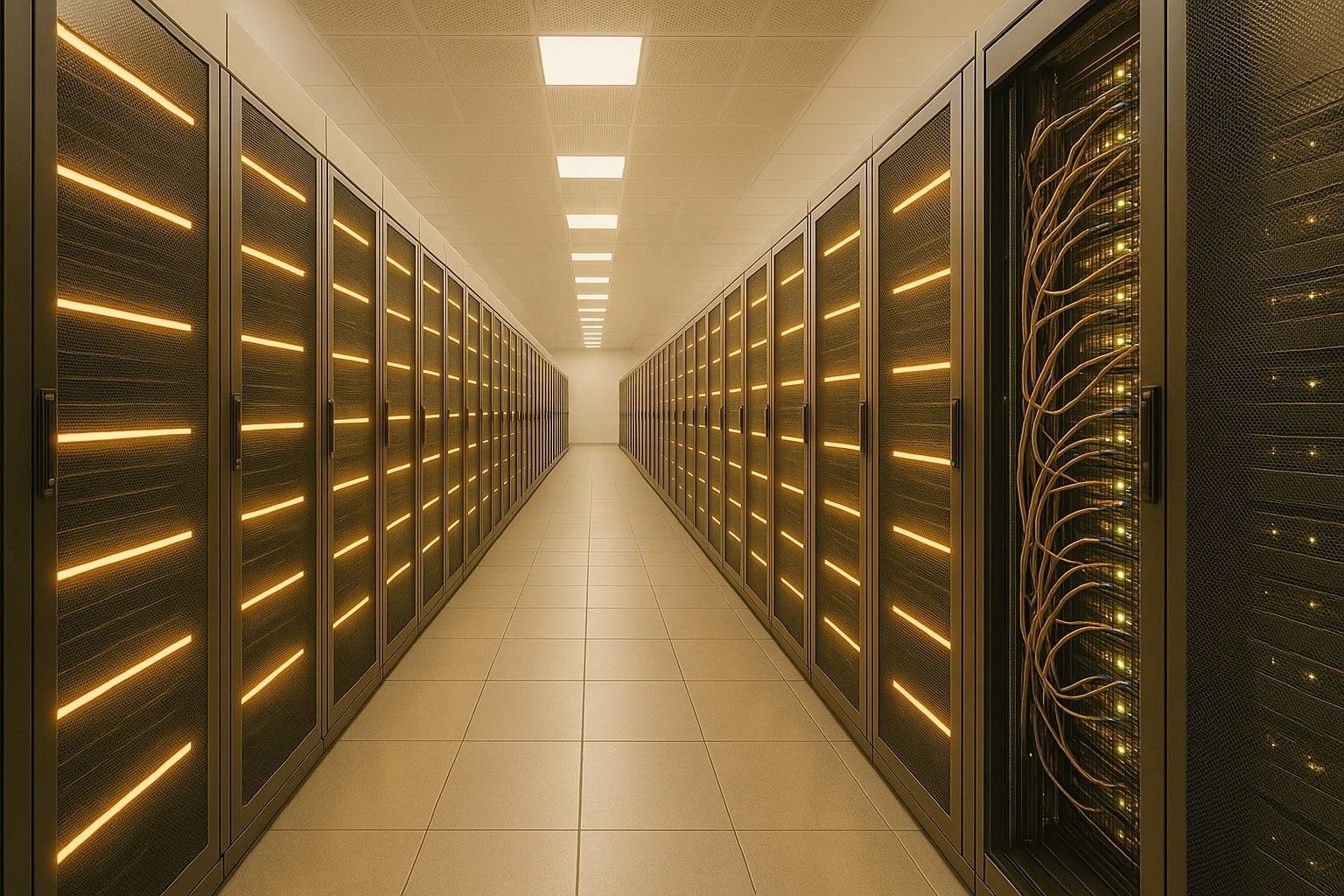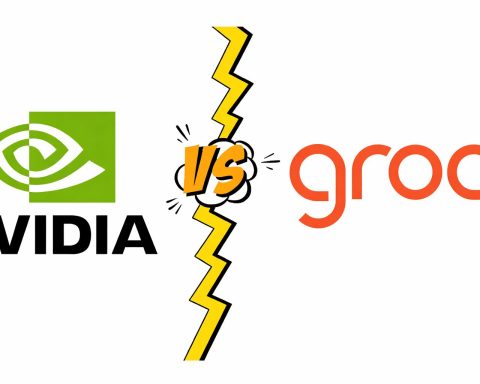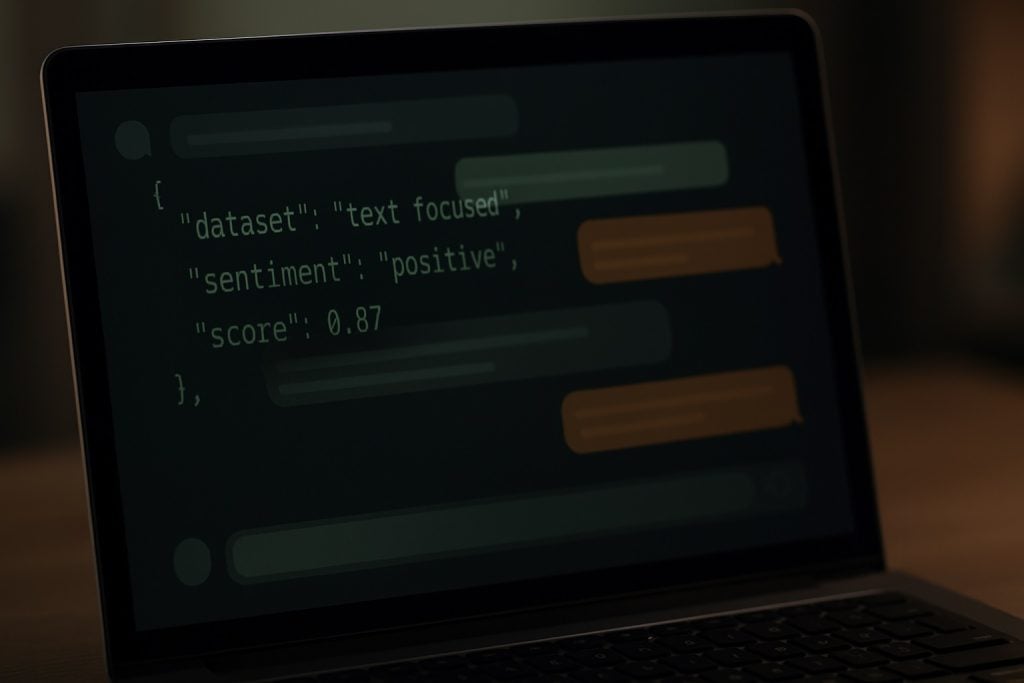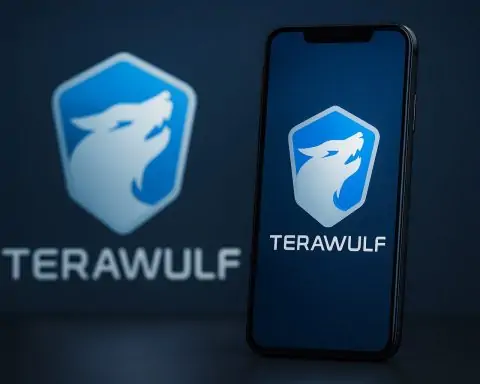- El Capitan at LLNL leads the June 2025 TOP500 with 1.742 exaFLOPS (HPL) using HPE Cray EX hardware, AMD 4th Gen EPYC CPUs, and MI300A accelerators.
- Frontier at ORNL is #2 with 1.353 exaFLOPS on HPL, powered by HPE Cray EX235a and AMD 3rd Gen EPYC CPUs plus MI250X GPUs.
- Aurora at Argonne is #3, delivering 1.012 exaFLOPS on HPL with Intel Xeon Max CPUs and Data Center GPU Max accelerators.
- JUPITER Booster at Jülich debuted at #4 with 0.793 exaFLOPS (partial) on a BullSequana-based system using NVIDIA Grace Hopper GH200 chips and built by Atos Eviden, containing about 4.8 million ARM cores and nearly 24,000 GH200 chips.
- Eagle at Microsoft Azure ranked #5 with 0.561 exaFLOPS on an NDv5 cluster using NVIDIA H100 GPUs and Intel Xeon Platinum 8480C CPUs.
- Europe secured three Top-10 systems in June 2025: JUPITER at #4, LUMI at #9 (~380 PFLOPS), and Leonardo at #10 (~241 PFLOPS).
- NVIDIA announced NVLink Fusion at Computex 2025 to let third‑party CPUs or accelerators connect to NVIDIA GPUs over NVLink, while requiring at least one NVIDIA component per node.
- AMD unveiled Project Helios at ISC 2025, a rack‑scale AI system with 72 MI400X GPUs, Zen 6 Venice CPUs, and Pensando networking in an Open Compute Project rack, slated for around 2026 with roughly 20 PFLOPS per MI400X card.
- Aurora achieved over 1 exaFLOP on HPL and 11.6 exaFLOPS mixed‑precision AI performance, enabling training of AuroraGPT on 10,624 blades.
- Hyperion Research reports the global HPC/AI market grew 23.5% in 2024 to $60 billion, with 78% of HPC sites running AI workloads.
The early summer of 2025 saw major milestones in high-performance computing (HPC), marked by new exascale supercomputers coming online, significant product launches from leading vendors, and accelerating HPC-AI convergence. In June 2025, the latest TOP500 rankings confirmed three U.S. exascale systems at the forefront (El Capitan, Frontier, and Aurora) and introduced Europe’s first near-exascale machine. Vendors like NVIDIA and AMD announced new technologies – from NVIDIA’s NVLink Fusion interconnect to AMD’s next-generation Instinct GPUs – aimed at boosting AI and HPC workloads. HPC adoption continued to expand across sectors: cloud providers entered the Top 5, pharmaceutical firms tapped dedicated supercomputers for drug discovery, and national initiatives funded HPC centers and training programs. Industry analysts reported double-digit market growth driven by AI, and scientists achieved breakthrough results (such as simulating drug behavior with quantum accuracy) using cutting-edge HPC systems. The following report details these developments with sources and context.
Exascale Supercomputers and Top500 Milestones
Three Exascale Systems Lead the World: The June 2025 update of the TOP500 list marked a historic moment – for the first time, three supercomputers surpassed one exaflop (10^18 operations per second) in the LINPACK benchmark [1]. The El Capitan system at LLNL (Lawrence Livermore) retained the #1 spot with 1.742 exaFLOPS (HPL) sustained performance [2] [3]. El Capitan, built by HPE/Cray, features AMD’s 4th Gen EPYC CPUs (24-core HPC variants) paired with Instinct MI300A APU accelerators, achieving remarkable efficiency (≈58.9 GFLOPS/watt) [4] [5]. At #2, Oak Ridge’s Frontier (HPE Cray EX235a) – the first exascale system deployed (2022) – delivered 1.353 exaFLOPS on HPL [6]. Frontier leverages AMD’s 3rd Gen EPYC CPUs and MI250X GPUs and continues to serve open science and AI research [7]. Debuting at #3 was Argonne’s long-awaited Aurora supercomputer, which achieved 1.012 exaFLOPS on HPL [8] [9]. Aurora is an Intel-powered HPE Cray EX system (Xeon CPU Max processors combined with Intel Data Center GPU Max accelerators), representing Intel’s entry into exascale-class computing [10]. With Aurora’s completion, all three U.S. Department of Energy exascale machines are now fully operational, marking a triumphant culmination of the Exascale Computing Project [11] [12].
Europe’s First Exascale-Class System: A major highlight at the ISC 2025 conference in June was the introduction of JUPITER, hosted at the Jülich Supercomputing Centre in Germany. The JUPITER Booster module debuted at #4 on the global rankings with a Linpack result of 0.793 exaFLOPS (793 PFLOPS) on a partial installation [13] [14]. Built by the European consortium Eviden (Atos), JUPITER is Europe’s pathfinder exascale system, based on the NVIDIA Grace Hopper (GH200) platform and BullSequana XH3000 architecture. It currently contains ~4.8 million ARM CPU cores and NVIDIA GPU cores (across nearly 24,000 GH200 Superchips) in a liquid-cooled setup [15] [16]. Once fully commissioned, JUPITER is expected to exceed 1 exaFLOPS, becoming Europe’s first true exascale computer [17] [18]. Notably, JUPITER is also the most energy-efficient among the top five systems at ~60 GFLOPS/watt [19] [20], underscoring Europe’s emphasis on sustainable supercomputing. European leaders hailed JUPITER as “a giant leap into the future of science, technology and sovereignty,” emphasizing that its extreme performance will catalyze research in climate modeling, energy, and biomedical fields across EU nations [21] [22].
Cloud and Industry Entries in Top 10: Reflecting new trends, a cloud-based system made the top five for the first time. Eagle (#5 on the June 2025 list) is a Microsoft Azure supercomputer (NDv5 cluster) that reached 0.561 exaFLOPS (561 PFLOPS) HPL performance using NVIDIA H100 GPUs and Xeon Platinum 8480C CPUs [23] [24]. Eagle’s presence signals the growing role of hyperscale cloud providers in HPC – it is used to power large AI models and HPC-as-a-service offerings. Rounding out the Top 10 were systems like Italy’s HPC6 at Eni (#6, 478 PFLOPS) [25] [26] and Japan’s formerly top-ranked Fugaku (#7, 442 PFLOPS) [27] [28]. Notably, Europe now claims three systems in the Top 10: besides JUPITER (#4), Finland’s LUMI (#9, ~380 PFLOPS) and Italy’s Leonardo (#10, ~241 PFLOPS) are based on HPE and Atos architectures respectively [29] [30]. This reflects the impact of the EuroHPC Joint Undertaking, which has deployed a network of petascale and pre-exascale machines across EU member states [31].
Chinese HPC Secrecy Continues: Absent from these rankings are China’s latest supercomputers – which reportedly achieved exascale capability years ago – because Chinese institutions did not submit new results. Industry observers note that China’s top systems remain shrouded in secrecy, creating a gap in public benchmarks [32] [33]. As a result, U.S. and European machines dominate the disclosed Top500, even as unreported Chinese exascale systems likely exist. This geopolitical undercurrent was acknowledged in analysis of the list, with experts highlighting a lack of new entries from China amid the dominance of U.S. AMD-based exascale systems [34].
Top 5 Supercomputers (June 2025) – Performance and Key Architecture [35] [36]:
| Rank | System (Location) | Linpack Rmax | Architecture & Processors |
|---|---|---|---|
| 1 | El Capitan (USA – LLNL) | 1.742 EFlop/s | HPE Cray EX; AMD 4th Gen EPYC CPUs + MI300A GPUs [37] [38] |
| 2 | Frontier (USA – ORNL) | 1.353 EFlop/s | HPE Cray EX; AMD 3rd Gen EPYC CPUs + MI250X GPUs [39] [40] |
| 3 | Aurora (USA – ANL) | 1.012 EFlop/s | HPE Cray EX; Intel Xeon Max CPUs + Data Center GPU Max GPUs [41] [42] |
| 4 | JUPITER Booster (Germany – JSC) | 0.793 EFlop/s (partial) | Atos Eviden BullSequana; NVIDIA Grace Hopper Superchips (GH200) [43] [44] |
| 5 | Eagle (USA – Microsoft Azure) | 0.561 EFlop/s | Azure NDv5 cluster; Intel Xeon CPUs + NVIDIA H100 GPUs [45] [46] |
(EFlop/s = exaFLOPS; data from Top500 June 2025 list [47] [48]. All top five systems use accelerated CPU+GPU architectures, and three exceed 10^18 FLOPS.)
HPC Hardware Advances and Vendor Announcements
NVIDIA’s NVLink Fusion and AI Infrastructure: At Computex 2025 (late May), NVIDIA unveiled NVLink Fusion, a new technology to let third-party chipmakers integrate their CPUs or accelerators more tightly with NVIDIA’s platform [49] [50]. NVLink Fusion extends NVIDIA’s high-bandwidth NVLink interconnect via licensed chiplets and IP, enabling semi-custom systems where a non-NVIDIA CPU or accelerator can directly interface over NVLink [51] [52]. For example, a partner could build a custom CPU connected to NVIDIA GPUs (replacing the NVIDIA Grace CPU in a Grace-Hopper design) or even a custom AI accelerator that plugs into an NVLink network [53] [54]. However, at least one NVIDIA component is still required in each node – the program allows either a third-party CPU or a third-party accelerator, but not both, ensuring NVIDIA silicon remains in the loop [55] [56]. NVLink Fusion aims to foster a more open AI ecosystem (responding to demand for flexibility) while cementing NVIDIA’s interconnect as a de facto standard. This move accompanies NVIDIA’s broader strategy to dominate AI infrastructure – CEO Jensen Huang emphasized building “AI factories” worldwide, partnering with cloud providers and telecoms to deploy NVIDIA-powered supercomputers [57]. By opening NVLink to select collaborators (e.g. MediaTek plans to use NVLink for an Arm server CPU [58]), NVIDIA is positioning its Grace CPU + Hopper GPU architecture and Quantum-2 InfiniBand networking as a foundation for heterogeneous supercomputers in both industry and research [59] [60].
NVIDIA-Powered Systems at ISC 2025: NVIDIA’s presence loomed large at the ISC 2025 conference in Hamburg. Alongside JUPITER’s showcase (with ~24,000 NVIDIA GH200 chips), NVIDIA announced that JUPITER is expected to reach over 90 exaFLOPS in AI performance, tailored for large-scale AI and scientific simulation workloads [61]. Jensen Huang remarked “AI will supercharge scientific discovery and industrial innovation,” calling JUPITER Europe’s most advanced AI supercomputer and highlighting its role in foundation model training, climate digital twins, and quantum research [62] [63]. NVIDIA’s focus on full-stack integration (from silicon to software like CUDA-X and cuQuantum) was evident – JUPITER employs NVIDIA’s software-defined platform to ensure applications in climate modeling, engineering (digital twins via Omniverse), and drug discovery (BioNeMo) run efficiently at scale [64] [65]. Meanwhile, NVIDIA’s Grace Hopper CPU-GPU technology also found adoption in smaller systems: several new HPC installations in early 2025 used Grace CPU + H100 GPU nodes (such as the Isambard-AI system in the UK) to accelerate AI research [66]. These systems demonstrated variable HPL efficiency (~53–77%), underlining the importance of optimized interconnects (NVIDIA’s own InfiniBand outperformed some Ethernet networks in tests) [67].
AMD’s Next-Gen Instinct GPUs and ‘Helios’ Rack: AMD seized the ISC spotlight with an “Advancing AI” event in June 2025, where CTO Mark Papermaster delivered the conference’s opening keynote on HPC-AI convergence. In a preview of AMD’s roadmap, the company introduced Project Helios, AMD’s first in-house designed rack-scale AI supercomputer solution [68]. Helios will combine upcoming Zen 6 EPYC “Venice” CPUs with Instinct MI400-series GPUs and Pensando ultra-fast networking in an Open Compute Project (OCP) standard rack [69] [70]. The flagship Instinct MI400X GPU is projected to be a huge leap – AMD claims it will be 10× more powerful than MI300X (the current generation) and roughly double the performance of the interim MI350X/MI355X GPUs launched in 2024 [71] [72]. Set for ~2026 release, MI400X will use a next-gen CDNA architecture (CDNA 5) and advanced packaging to achieve ~20 dense FP4 PFLOPS per card (versus 10 PFLOPS for MI355X) [73]. Helios racks will contain 72 of these MI400X GPUs, interconnected by AMD’s Ultra Accelerator Link (UAL) and Ultra Ethernet, to enable large-scale training with high bandwidth and low latency [74] [75]. AMD’s aim is to close the gap with NVIDIA’s DGX “superpods” by offering an integrated solution for both “frontier model training and massive-scale inference”, delivered as a unified architecture with open standards [76] [77]. While AMD trails NVIDIA in deployed AI systems, 2025 is a pivotal year – cloud providers like Oracle and major ODMs started deploying AMD’s current Instinct MI250/MI300-based clusters, and AMD’s share of new Top500 flops is growing (AMD CPUs or GPUs contribute to 4 of the top 5 systems) [78] [79]. Experts are watching if AMD’s aggressive roadmap (with MI300X and MI400X on horizon) can translate into more HPC/AI wins, especially as AMD touts a path to zettascale computing (albeit noting such a feat could require “half a gigawatt to operate”, highlighting power challenges ahead [80] [81]).
Intel’s Aurora and Future Chips: Intel’s major HPC achievement in this period was the delivery of the Aurora supercomputer at Argonne – marking Intel’s re-entry into leadership-class supercomputing. After years of delays, Aurora’s installation of 10,624 blades (each with Xeon Max CPUs and Data Center GPU Max accelerators) was completed, and the system exceeded 1.0 exaFLOPS in May 2025 [82] [83]. HPE (which acquired Cray) and Intel officially handed over Aurora to Argonne by mid-2025 as the world’s second exascale system for open science, and the machine became fully available to researchers [84] [85]. Intel and Argonne reported Aurora’s mixed-precision AI performance at 11.6 exaFLOPS, making it the fastest AI system on the planet at the time [86] [87]. Early science programs on Aurora include training “AuroraGPT” (a science-focused large language model) and high-fidelity simulations of nuclear reactors and supernovae [88] [89]. Looking ahead, Intel is strategizing its next-gen accelerators: the originally planned “Falcon Shores” GPU (a hybrid XPU concept) was re-scoped to an internal test project, with Intel now planning a more advanced “Jaguar Shores” AI chip around 2026 [90] [91]. This effectively means Intel’s first post-Ponte Vecchio discrete supercompute GPU for external customers won’t arrive until Jaguar Shores, as Falcon Shores was “relegated to a test vehicle” to prepare the software ecosystem [92] [93]. In CPUs, Intel’s Xeon line continues to evolve for HPC: Argonne’s Aurora uses Sapphire Rapids-derived Xeon Max chips (with on-package HBM memory), and future Emerald Rapids and Clearwater Forest CPUs are in the pipeline for 2025–2026, focusing on higher memory bandwidth and core counts for HPC/AI workloads [94] [95]. While Intel missed the initial AI wave, their hope is that by combining CPU, GPU, and interconnect innovations (e.g. CXL and silicon photonics down the road), they can re-establish a strong position in HPC-AI by the late 2020s.
Other Notable Hardware Developments: Traditional HPC OEMs and new players also made news. HPE/Cray, besides integrating AMD and Intel tech into exascale systems, highlighted its work on novel architectures – for instance, HPE has been involved in delivering adaptive supercomputers that blend CPUs, GPUs, and even experimental processors (such as Cerebras wafer-scale engines or quantum accelerators) for specialized workloads. Atos (Eviden) showcased its liquid-cooled BullSequana range in JUPITER and other EuroHPC systems, emphasizing energy efficiency and modular design. Meanwhile, in China, companies like Huawei (through spin-offs like xFusion) introduced high-density HPC designs – at ISC, xFusion unveiled a system supporting up to 144 CPUs per rack cabinet with advanced liquid cooling [96], although export controls limit their global reach. NEC announced a new supercomputer contract in Japan: an unnamed system for fusion energy research, going live in July 2025, using an innovative mix of Intel 6900P CPUs with MR-DIMM memory and AMD MI300A GPUs – providing 40 PFLOPS for plasma/fusion simulations [97] [98]. This is Japan’s first deployment of AMD MI300A accelerators and Intel’s latest memory technology, highlighting a trend toward heterogeneous HPC nodes even beyond the U.S. and Europe [99] [100]. In networking, Mellanox/NVIDIA InfiniBand remains the dominant interconnect for top systems, but startups and consortiums are pushing alternatives (e.g. the UCIe and CXL standards for chip-to-chip links, and the Ultra Ethernet Consortium led by AMD). Overall, hardware announcements in mid-2025 underscore that the race to exascale and beyond is not just about FLOPS, but also about integrating diverse processors, memory innovations, and interconnects to meet the twin demands of simulation and AI.
Convergence of HPC and AI: Trends and Expert Insights
High-performance computing and artificial intelligence are increasingly intertwined in 2025, a theme emphasized by industry leaders at recent events. In his ISC 2025 keynote, AMD’s Mark Papermaster observed that “HPC and AI are intrinsically linked through their hardware, software, and the nature of their problems”, with both fields requiring highly energy-efficient, scalable computing [101] [102]. This convergence is reshaping the HPC landscape: 78% of HPC sites now run AI workloads alongside traditional simulations, according to Hyperion Research, and HPC centers are evolving to support large language models (LLMs), graph analytics, and other AI applications [103] [104].
AI Partnerships and Supercomputers: One prominent example is the collaboration between NVIDIA, the Danish National Supercomputing Center (DCAI), and Novo Nordisk, a global pharmaceutical company. In June 2025, NVIDIA announced at GTC Paris that Novo Nordisk will become a customer of the new Gefion AI supercomputer – the first national AI supercomputer in Denmark [105]. Gefion is an NVIDIA DGX SuperPOD-based system (delivered via DCAI) that provides massive GPU-accelerated computing power for AI-driven drug discovery and healthcare research [106] [107]. By leveraging Gefion, Novo Nordisk aims to apply generative AI models to tasks like protein structure modeling and novel therapeutics design [108]. This reflects a broader trend of industry-specific AI supercomputers: companies in pharma, automotive, and finance are partnering with HPC providers to secure dedicated infrastructure for AI. In the U.S., for instance, OpenAI and Microsoft have harnessed Azure’s supercomputing clusters (like the NDv5/Eagle system) to train cutting-edge models [109] [110]. Elon Musk’s xAI venture has reportedly acquired access to a large GPU cluster as well, indicating that even startup AI labs are investing in supercomputer-class resources [111]. The presence of these AI-oriented systems in the Top500 (by virtue of running Linpack) underscores how HPC and AI workloads are converging on the same platforms. It is now common for a supercomputer to devote time to both scientific simulations and AI training; for example, ORNL’s Frontier not only runs physics simulations but recently set a benchmark by training an AI-driven computational fluid dynamics (CFD) model 25× faster on its GPUs compared to previous-gen systems [112] [113].
Expert Perspectives: Leaders across the field have commented on this convergence. Papermaster’s keynote highlighted that leading machines like Frontier, El Capitan, and Europe’s LUMI are “pushing the boundaries of performance while prioritizing energy efficiency,” serving both traditional HPC and AI uses [114] [115]. Scott Atchley, ORNL’s HPC operations manager, noted during ISC that the challenge now is looking “beyond Frontier, beyond exascale” to architectures that can handle AI at even larger scales (like models with trillions of parameters) without sacrificing simulation performance [116]. On the vendor side, NVIDIA’s Jensen Huang has framed accelerated computing as the engine for modern AI, stating that “HPC+AI is the instrument of scientific discovery” and promoting initiatives like NVIDIA’s Earth-2 (a project to create a full climate “digital twin” of Earth) which blend HPC simulation with AI prediction [117] [118]. Similarly, Earl Joseph, CEO of Hyperion Research, observed that “HPC-class machines are being purchased to adopt AI into enterprise data centers,” bringing new commercial buyers into the market [119] [120]. This is evident from companies like Meta, Tesla, and banks investing in GPU-rich clusters for AI – essentially HPC by another name. Joseph also noted that AI-driven growth pushed the HPC/AI market to its highest growth rate in decades (23.5% in 2024), and that large-language-model (LLM) enthusiasm “started this growth two years ago and is now being applied across all HPC sectors” [121] [122].
Sectors Blurring: The integration of AI is also changing how we classify workloads. Traditional HPC applications (e.g. climate modeling, genomics) are incorporating machine learning for data analysis and surrogate modeling, while AI applications (like autonomous driving simulations or financial risk models) require HPC-style heavy lifting. For instance, at Argonne, researchers are using Aurora to train AuroraGPT (an LLM for scientific domains) as well as to run quantum chromodynamics simulations for dark matter research [123] [124]. In both cases, the supercomputer’s mix of CPUs, GPUs, and high-speed networks is essential. The convergence of HPC, AI, and even quantum computing was a recurring topic at ISC and other 2025 forums. Europe’s JUPITER will have modules dedicated to neuromorphic and quantum processors alongside its GPU booster [125], reflecting a vision of hybrid computing environments where HPC orchestrates AI and quantum co-processors for specialized tasks.
In summary, the mid-2025 consensus is that HPC and AI are no longer separate realms. “AI is now a core part of HPC,” and conversely, solving the hardest AI problems (like training multi-trillion-parameter models or real-time analytics on big science data) demands HPC-scale resources. This convergence is driving co-design of software (e.g. unified programming frameworks, AI-enhanced simulation codes) and hardware (GPUs with FP64 for HPC and tensor cores for AI, memory architectures for both sparse AI and dense simulations). As Papermaster noted, it’s leading to an “open ecosystem” push – partnerships and standards (like OCP racks, Ethernet fabrics for AI) – to ensure that the next generation of innovation is not bottlenecked by closed systems [126] [127]. The coming years will test how effectively the HPC community can integrate these technologies to continue delivering scientific and industrial breakthroughs.
HPC Adoption in Science, Industry, and Government
Beyond the raw hardware, June–July 2025 featured many developments in how HPC is being used across different domains – from scientific research breakthroughs to new industry and government initiatives harnessing supercomputing:
- Scientific Breakthroughs with HPC: Perhaps the most celebrated recent achievement is in computational drug discovery. Using ORNL’s Frontier (the world’s top system), an international research team led by Prof. Giuseppe Barca accomplished the first quantum-accurate simulation of a realistic biological system – essentially modeling drug molecules and protein targets at full quantum chemistry precision [128] [129]. This breakthrough, achieved in late 2024 and reported in 2025, demonstrated the ability to simulate drug behavior with accuracy “that rivals physical experiments,” capturing quantum effects like bond-breaking in systems with hundreds of thousands of atoms [130] [131]. “We can now observe not just the movement of a drug but also its quantum mechanical properties over time,” Barca explained [132] [133]. The new software and methods developed – running on Frontier’s exascale hardware – essentially set a “new benchmark in computational chemistry” for drug design [134] [135]. This capability could significantly accelerate discovering treatments for diseases, since over 80% of proteins are not addressable by current drugs [136]. Frontier’s exascale horsepower was crucial: “This is exactly why we built Frontier – to tackle larger, more complex problems… these simulations push our computing capabilities into a brand new world of possibilities,” noted ORNL scientist Dmytro Bykov [137] [138]. The result illustrates the profound scientific impact of exascale HPC – solving problems (like full quantum molecular dynamics) that were previously intractable. Other examples of HPC-driven breakthroughs include cosmology simulations (Argonne’s Aurora is being used to simulate the universe’s evolution to interpret dark energy signals) and fusion energy modeling (LLNL’s exascale computers are running 3D simulations of plasma for inertial confinement fusion, helping to replicate and understand 2022’s fusion ignition experiment).
- Climate and Weather Modeling: Climate science remains a key beneficiary of new HPC deployments. The European Centre for Medium-Range Weather Forecasts (ECMWF) and various national weather agencies are adopting GPU-accelerated and AI-enhanced models to improve forecasting. Notably, Germany’s national weather service DWD installed two new supercomputers (between late 2024 and mid-2025) using NEC SX-Aurora vector processors – a rare modern instance of vector architecture aimed at speeding up atmospheric simulations [139] [140]. These DWD machines focus on high-resolution regional forecasts and climate model post-processing, illustrating that HPC diversity (including vector engines) can still find niches in 2025. Climate modeling is also highlighted as a marquee application for exascale: JUPITER in Europe will contribute to projects like Destination Earth (creating digital twins of the planet for climate change mitigation) [141] [142]. With its mix of AI and simulation capabilities, JUPITER will enable “high-resolution, real-time environmental simulations” and improved climate predictions [143] [144]. In the U.S., DOE’s Earth system models are beginning to run on Frontier and El Capitan, allowing more accurate and faster climate projections that feed into policy decisions. The fusion of AI into climate HPC is also underway: researchers are training AI models (e.g. generative models) on observational data to complement physics-based models, all using HPC resources.
- Pharmaceuticals and Healthcare: As mentioned, pharma is heavily investing in HPC/AI for drug discovery. In addition to the Frontier quantum chemistry success, Europe saw the launch of public-private partnerships for biomedical AI. The Novo Nordisk – DCAI Gefion supercomputer deal (June 11, 2025) gives the pharma giant a dedicated platform to run large AI workloads on patient data and molecular data [145] [146]. This is one of the first instances of a pharmaceutical company directly utilizing a national supercomputer for AI-driven research. In the US, the National Cancer Institute is collaborating with DOE labs to use exascale systems for cancer surveillance and drug screening (for example, running deep learning on medical imaging at scale). During this period, Argonne also reported using AI+HPC to advance cancer drug discovery – Argonne’s AI for molecular design was recognized for speeding up identification of promising drug candidates [147]. On the clinical side, hospital networks are exploring HPC for genomic analytics; for instance, in July 2025 a consortium of university hospitals in the UK began using the Cambridge-1 supercomputer (NVIDIA’s healthcare-focused system) to run large-scale genomics AI for rare disease diagnosis. All these efforts demonstrate HPC’s expanding role in shortening the R&D cycle for new treatments and enabling personalized medicine.
- Energy and Fusion Research: HPC continues to be indispensable in the energy sector. The ENI HPC6 system in Italy (which ranked #6 globally) is used by the oil & gas industry to run advanced seismic imaging and reservoir simulations, as well as to optimize renewable energy systems [148] [149]. HPC6’s presence in the top ten (with nearly 478 PFLOPS) underlines how energy companies are leveraging HPC to both improve extraction efficiency and to research carbon capture and alternative energy. In fusion energy, HPC is crucial for both magnetic confinement (tokamak) simulations and laser fusion modeling. The new NEC supercomputer slated for Japan’s National Institute for Fusion Science (40 PFLOPS, operational July 2025) will allow researchers to run plasma turbulence simulations with higher fidelity to understand reactor conditions [150] [151]. Fusion experiments like ITER and laser facilities (NIF) generate massive data and physics challenges that HPC can help unravel. Notably, after the first net-positive fusion ignition at NIF in 2022, LLNL has been using El Capitan in early 2025 to simulate the fusion implosion process in 3D, helping to plan future experiments. Such computing-intensive tasks (resolving microscopic instabilities in plasmas) would have been impractical pre-exascale. Now, with machines like El Capitan (with >10 million cores [152]), scientists can run 3D ICF simulations that capture essential physics in days instead of months.
- Finance and National Security: The finance sector’s adoption of HPC is more low-profile but accelerating. Banks and hedge funds are increasingly using HPC clusters for risk modeling, market simulations, and AI-driven analytics. During this period, it was reported that JPMorgan Chase expanded its HPC infrastructure to support more granular risk calculations for regulatory stress tests, using GPU acceleration to achieve real-time risk updates (though exact details are proprietary). Meanwhile, government security agencies rely on HPC for cryptography, intelligence, and defense simulations. In June 2025, the U.S. Department of Defense HPC Modernization Program (HPCMP) opened its annual call for Frontier Project proposals [153], inviting research that requires large-scale computing (often in areas like hypersonics, signal processing, and nuclear stockpile stewardship). The U.S. Air Force and NSA have also been investing in AI supercomputers for processing satellite imagery and communications data – essentially HPC clusters specialized for data analytics. While specifics are classified, it’s known that multiple 100+ PFLOP systems are in operation within defense labs. The NNSA (National Nuclear Security Administration) was a key player this period: with El Capitan’s testing completed, NNSA began initial weapons physics simulation runs at full exascale resolution [154]. Early results reportedly show much higher fidelity in modeling nuclear weapon performance and aging. NNSA officials stated that exascale computing is crucial for nuclear security, allowing 3D simulations with unprecedented detail as a substitute for live testing. This aligns with the national security rationale that drove exascale funding in the first place.
- Government Funding and Initiatives: June–July 2025 saw new policies aimed at bolstering HPC capabilities. In the U.S., a bipartisan group of lawmakers introduced the American Science Acceleration Project (ASAP), an initiative to significantly boost federal support for R&D infrastructure including supercomputing and AI resources [155]. As HPCwire reported, “Lawmakers are giving fresh consideration to science funding” through ASAP, which is envisioned as a multi-billion dollar package investing in computing and data facilities across NSF, DOE, and other agencies [156]. While still in planning, ASAP reflects a recognition in Congress that the U.S. must “supercharge” its scientific computing to stay competitive [157]. Meanwhile, in Europe, the EuroHPC Joint Undertaking launched two new calls in July 2025 to strengthen HPC skills and regional support. One call provides €1 million to fund several editions of an International HPC Summer School for young researchers (2026–2029) [158] [159], aiming to train the next generation in HPC and quantum computing. The second call dedicates €42 million to expand and network National Competence Centres (NCCs) in HPC across EU member states [160] [161]. These NCCs act as local hubs offering training, industry outreach, and access to supercomputers for SMEs and academia. By coordinating NCCs and linking them with EuroHPC’s flagship “AI Factories” and Centers of Excellence, Europe seeks to democratize HPC access and expertise, ensuring that smaller countries and companies can benefit from the continent’s supercomputers [162] [163]. Additionally, EuroHPC formally announced that as of mid-2025 it has procured ten supercomputers (located in different European countries), three of which now rank in the world’s top 10 – a point of pride highlighting Europe’s growing HPC infrastructure [164].
- Academic and International Collaborations: HPC is inherently collaborative, and there were notable partnerships formed. For example, in June 2025 the SKA Observatory (Square Kilometre Array radio telescope project) partnered with HPC centers in South Africa and Australia to prepare for the deluge of data the SKA will produce; they plan to use leadership-class systems to process raw radioastronomy data in real time. In Japan, RIKEN announced a program to link the Fugaku supercomputer with prototype quantum computers, effectively creating a hybrid quantum-HPC facility by 2025 [165] [166]. This “quantum-centric supercomputing” concept aims to offload certain optimization or quantum simulation tasks to actual quantum hardware, with Fugaku coordinating. Such initiatives show how HPC centers are evolving into integrated computing ecosystems that include AI accelerators and quantum processors alongside classical CPUs/GPUs. On the human capital side, HPC training remains critical: both the EU and US hosted summer schools and hackathons in this period. The DOE’s Computational Science Graduate Fellowship program saw a record number of applicants in 2025, likely due to the excitement around exascale machines becoming available to young researchers.
Market Growth and Forecasts
The HPC industry is experiencing robust growth driven by new use cases and broadening adoption. According to Hyperion Research’s annual market update (pre-ISC 2025), the global HPC/AI market (including on-premise systems, cloud services, software, and storage) grew by 23.5% in 2024, reaching $60 billion in revenue [167] [168]. This is the highest annual growth rate in many years – described as the strongest boom “in decades” – and was largely fueled by the explosion of AI demand on HPC infrastructure [169] [170]. Hyperion attributes much of the surge to the proliferation of large language models and AI in 2023–2024, which drove both new customers to purchase HPC-class systems and existing HPC sites to expand their capacity [171] [172]. They note that AI is now used by over 78% of HPC centers worldwide, and the synergy of big data with big compute has expanded the definition of HPC workloads [173]. Not only are scientific domains using more AI, but enterprise buyers (in manufacturing, finance, healthcare) are investing in HPC for the first time, drawn by AI and high-performance data analytics needs [174] [175].
Cloud HPC Growth: Another trend is the rise of cloud-based HPC consumption. Hyperion’s report indicated that cloud spending for HPC/AI reached ~$9 billion in 2024, and is expected to grow ~17–20% annually for the next few years [176]. This reflects more organizations leveraging cloud providers (like AWS, Azure, Google) for burst HPC workloads and for accessing specialized AI hardware without large upfront investments. The presence of Azure’s Eagle supercomputer in the Top500 and AWS’s publicizing of their Trn1 and Inf2 instance usage for AI training are evidence of this shift. However, on-premises investments remain strong as well – especially for large-scale, steady workloads and for reasons of data control and efficiency at scale.
Outlook: Hyperion projects that the total HPC/technical computing market will exceed $100 billion by 2028 if current trends continue [177] [178]. Key drivers for the next 3–5 years include the integration of AI (continued double-digit growth in AI-focused server sales), the emergence of edge HPC (smaller scale high-performance computing at edge devices, which could add new revenue streams), and governmental pushes for technological sovereignty (leading to big investments in indigenous supercomputers in regions like Europe, India, and potentially Latin America). There are also new application frontiers, such as digital twins (of factories, cities, even the Earth) that require HPC-scale simulation plus real-time data assimilation. Industry analysts from IDC and Intersect360 echo these positive forecasts, while cautioning that supply-chain constraints (e.g., advanced GPU shortages) and geopolitical factors (trade restrictions on chips) could moderate growth in certain regions.
One notable market dynamic is the entry of non-traditional vendors and startups into HPC/AI. Companies like Cerebras (wafer-scale AI engines), Graphcore, SambaNova, and domestic Chinese chipmakers are all vying for pieces of the HPC/AI pie. While NVIDIA currently dominates AI accelerators and has a growing share in HPC, competition is expected to increase – potentially diversifying the hardware landscape. If new accelerator technologies prove viable (for example, AI-specialized chips that excel in power efficiency), they might carve out niches in future supercomputers or datacenters. The market is also responding to energy efficiency mandates: power costs and green computing goals mean that future procurements weigh performance per watt heavily. We already see this with systems like JUPITER and LUMI which prioritize efficient design. Hyperion’s analysis suggests vendors investing in cooling innovations (immersion, exotic cooling) and low-power architectures will have an edge as HPC centers strive to contain electricity usage.
Finally, the HPC community is eyeing the next big milestone: zettascale (10^21 operations/sec). While zettascale is likely a decade away, AMD made headlines by claiming that achieving a zettaFLOP could require on the order of 500 MW of power with current technologies [179]. This stark estimate (enough electricity for ~375,000 homes) [180] underscores why efficiency gains are not just desirable but essential. It also implies that reaching zettascale will demand new paradigms – possibly 3D-stacked photonic processors, quantum accelerators, or other breakthroughs. For now, the focus is on fully utilizing the exascale machines just delivered and incrementally improving to multi-exaflop systems (Aurora’s theoretical peak is ~2 exaflops, and El Capitan ~2.7 exaflops [181], hinting there is headroom even within current deployments). Market analysts believe that the HPC/AI sector will continue robust growth so long as it remains the “innovation engine” for advances in science, industry, and national security.
Conclusion
In summary, June and July 2025 have been exceptionally eventful for high-performance computing. The exascale era is in full swing, with three U.S. exascale systems operational and Europe’s first on the cusp, collectively enabling new scientific feats from cancer drug discovery to cosmological simulations. Major vendors rolled out next-gen roadmaps – NVIDIA opening up its NVLink ecosystem to drive heterogeneous AI systems, and AMD plotting GPUs an order of magnitude faster to challenge the status quo – underscoring intense innovation competition. The lines between HPC and AI blurred further, highlighted by expert commentary and real-world systems that serve both purposes interchangeably. HPC’s influence continued to expand into diverse sectors: providing the computational backbone for AI research in pharma, improving climate modeling for environmental policy, securing nations via more precise nuclear simulations, and even powering financial analytics and smart cities. Meanwhile, governments and coalitions launched initiatives to train talent and fund infrastructure, recognizing HPC as strategic infrastructure for economic and scientific leadership.
The trajectory for HPC in the latter half of 2025 and beyond looks promising. With market demand at an all-time high and novel technologies on the horizon (such as chiplet-based integrations, quantum accelerators, and advanced memory systems), we can expect continued rapid developments. As Mark Papermaster aptly noted, “HPC and AI are converging in a way that will reshape much of the industry in the coming years.” [182] The achievements of June–July 2025 – from hitting new performance records to achieving breakthrough research results – are concrete evidence of this transformation. High-performance computing is not only thriving; it is increasingly central to addressing the world’s biggest challenges and opportunities, truly “accelerating the pace of discovery” in science and society [183].
Sources:
- TOP500 List – June 2025 Highlights [184] [185]; Tom’s Hardware (Anton Shilov), Top500 AMD Supercomputers and Chinese HPC Secrecy [186] [187]; TOP500.org official listing [188] [189].
- NVIDIA Newsroom, “NVIDIA Powers Europe’s Fastest Supercomputer (JUPITER)” [190] [191].
- HPCwire via InnovationNewsNetwork, HPC-Quantum Chemistry Breakthrough for Drug Discovery [192] [193].
- ServeTheHome, “NVIDIA Announces NVLink Fusion” (Ryan Smith) [194] [195].
- Tom’s Hardware, “AMD says Instinct MI400X will be 10× MI300X (Helios rack)” [196] [197]; “Aurora fully operational” (Anton Shilov) [198] [199].
- ISC 2025 Keynote info (ISC Press Release) [200] [201]; Papermaster quoted via ISC abstract [202].
- EuroHPC Joint Undertaking Press Release (1 July 2025) [203] [204].
- Hyperion Research market update via InsideHPC [205] [206].
- Additional references: NextPlatform analysis of Top500 new systems [207] [208]; HPCwire news summaries (via search snippets) on U.S. ASAP proposal [209] and others; DatacenterDynamics on NEC’s fusion supercomputer [210].
References
1. www.tomshardware.com, 2. top500.org, 3. www.tomshardware.com, 4. top500.org, 5. www.tomshardware.com, 6. top500.org, 7. top500.org, 8. top500.org, 9. www.tomshardware.com, 10. top500.org, 11. www.tomshardware.com, 12. www.tomshardware.com, 13. top500.org, 14. www.tomshardware.com, 15. top500.org, 16. nvidianews.nvidia.com, 17. nvidianews.nvidia.com, 18. nvidianews.nvidia.com, 19. nvidianews.nvidia.com, 20. nvidianews.nvidia.com, 21. nvidianews.nvidia.com, 22. nvidianews.nvidia.com, 23. top500.org, 24. www.tomshardware.com, 25. top500.org, 26. top500.org, 27. top500.org, 28. top500.org, 29. top500.org, 30. eurohpc-ju.europa.eu, 31. eurohpc-ju.europa.eu, 32. www.tomshardware.com, 33. www.tomshardware.com, 34. www.tomshardware.com, 35. www.tomshardware.com, 36. top500.org, 37. top500.org, 38. top500.org, 39. top500.org, 40. top500.org, 41. top500.org, 42. www.tomshardware.com, 43. top500.org, 44. nvidianews.nvidia.com, 45. top500.org, 46. www.tomshardware.com, 47. www.tomshardware.com, 48. www.tomshardware.com, 49. www.servethehome.com, 50. www.servethehome.com, 51. www.servethehome.com, 52. www.servethehome.com, 53. www.servethehome.com, 54. www.servethehome.com, 55. www.servethehome.com, 56. www.servethehome.com, 57. www.hpcwire.com, 58. s201.q4cdn.com, 59. www.servethehome.com, 60. nvidianews.nvidia.com, 61. nvidianews.nvidia.com, 62. nvidianews.nvidia.com, 63. nvidianews.nvidia.com, 64. nvidianews.nvidia.com, 65. nvidianews.nvidia.com, 66. www.nextplatform.com, 67. www.nextplatform.com, 68. www.tomshardware.com, 69. www.tomshardware.com, 70. www.tomshardware.com, 71. www.tomshardware.com, 72. www.tomshardware.com, 73. www.tomshardware.com, 74. www.tomshardware.com, 75. www.tomshardware.com, 76. www.tomshardware.com, 77. www.tomshardware.com, 78. www.tomshardware.com, 79. www.nextplatform.com, 80. www.tomshardware.com, 81. www.tomshardware.com, 82. www.intc.com, 83. www.anl.gov, 84. www.tomshardware.com, 85. www.tomshardware.com, 86. www.tomshardware.com, 87. www.tomshardware.com, 88. www.tomshardware.com, 89. www.tomshardware.com, 90. www.nextplatform.com, 91. www.reddit.com, 92. www.servethehome.com, 93. www.reddit.com, 94. www.nextplatform.com, 95. www.nextplatform.com, 96. www.businesswire.com, 97. www.datacenterdynamics.com, 98. www.datacenterdynamics.com, 99. www.datacenterdynamics.com, 100. www.datacenterdynamics.com, 101. isc-hpc.com, 102. isc-hpc.com, 103. insidehpc.com, 104. insidehpc.com, 105. www.prnewswire.com, 106. hitconsultant.net, 107. www.sahmcapital.com, 108. biostock.se, 109. www.tomshardware.com, 110. www.tomshardware.com, 111. www.tomshardware.com, 112. www.tomshardware.com, 113. www.tomshardware.com, 114. isc-hpc.com, 115. isc-hpc.com, 116. www.facebook.com, 117. nvidianews.nvidia.com, 118. nvidianews.nvidia.com, 119. insidehpc.com, 120. insidehpc.com, 121. insidehpc.com, 122. insidehpc.com, 123. www.anl.gov, 124. physics.mit.edu, 125. www.nextplatform.com, 126. isc-hpc.com, 127. www.tomshardware.com, 128. www.innovationnewsnetwork.com, 129. www.innovationnewsnetwork.com, 130. www.innovationnewsnetwork.com, 131. www.innovationnewsnetwork.com, 132. www.innovationnewsnetwork.com, 133. www.innovationnewsnetwork.com, 134. www.innovationnewsnetwork.com, 135. www.innovationnewsnetwork.com, 136. www.innovationnewsnetwork.com, 137. www.innovationnewsnetwork.com, 138. www.innovationnewsnetwork.com, 139. www.nextplatform.com, 140. www.nextplatform.com, 141. nvidianews.nvidia.com, 142. nvidianews.nvidia.com, 143. nvidianews.nvidia.com, 144. nvidianews.nvidia.com, 145. biostock.se, 146. www.sahmcapital.com, 147. www.hpcwire.com, 148. top500.org, 149. top500.org, 150. www.datacenterdynamics.com, 151. www.datacenterdynamics.com, 152. top500.org, 153. www.hpc.mil, 154. top500.org, 155. x.com, 156. x.com, 157. x.com, 158. eurohpc-ju.europa.eu, 159. eurohpc-ju.europa.eu, 160. eurohpc-ju.europa.eu, 161. eurohpc-ju.europa.eu, 162. eurohpc-ju.europa.eu, 163. eurohpc-ju.europa.eu, 164. eurohpc-ju.europa.eu, 165. www.datacenterdynamics.com, 166. thequantuminsider.com, 167. insidehpc.com, 168. insidehpc.com, 169. insidehpc.com, 170. insidehpc.com, 171. insidehpc.com, 172. insidehpc.com, 173. insidehpc.com, 174. insidehpc.com, 175. insidehpc.com, 176. insidehpc.com, 177. insidehpc.com, 178. insidehpc.com, 179. www.tomshardware.com, 180. www.tomshardware.com, 181. top500.org, 182. isc-hpc.com, 183. www.anl.gov, 184. top500.org, 185. top500.org, 186. www.tomshardware.com, 187. www.tomshardware.com, 188. top500.org, 189. top500.org, 190. nvidianews.nvidia.com, 191. nvidianews.nvidia.com, 192. www.innovationnewsnetwork.com, 193. www.innovationnewsnetwork.com, 194. www.servethehome.com, 195. www.servethehome.com, 196. www.tomshardware.com, 197. www.tomshardware.com, 198. www.tomshardware.com, 199. www.tomshardware.com, 200. isc-hpc.com, 201. isc-hpc.com, 202. isc-hpc.com, 203. eurohpc-ju.europa.eu, 204. eurohpc-ju.europa.eu, 205. insidehpc.com, 206. insidehpc.com, 207. www.nextplatform.com, 208. www.nextplatform.com, 209. x.com, 210. www.datacenterdynamics.com










